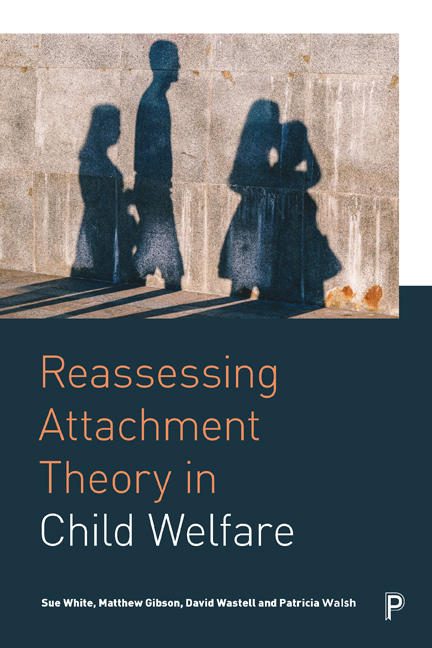Book contents
- Frontmatter
- Contents
- List of Figures, Table and box
- About the Authors
- Acknowledgements
- Preface: Becoming Attached to Attachment Theory
- 1 Love is a Wondrous State: Origins and Early Debates
- 2 Social work and the Attachment Story: a Felicitous Bond?
- 3 Shaping Practice: Prescribing Assessment
- 4 Practising Attachment Theory in Child Welfare
- 5 Exhibiting Disorganised Attachment: not even Wrong?
- 6 Breaking the back of love: Attachment Goes Neuro-Molecular
- Coda: love Reawakened?
- References
- Index
Coda: love Reawakened?
Published online by Cambridge University Press: 23 February 2021
- Frontmatter
- Contents
- List of Figures, Table and box
- About the Authors
- Acknowledgements
- Preface: Becoming Attached to Attachment Theory
- 1 Love is a Wondrous State: Origins and Early Debates
- 2 Social work and the Attachment Story: a Felicitous Bond?
- 3 Shaping Practice: Prescribing Assessment
- 4 Practising Attachment Theory in Child Welfare
- 5 Exhibiting Disorganised Attachment: not even Wrong?
- 6 Breaking the back of love: Attachment Goes Neuro-Molecular
- Coda: love Reawakened?
- References
- Index
Summary
[L]et the State do all it can for those who for one reason or another are left stranded and in need of protection. But let us also remember that there are, fortunately, some normal men and women, especially amongst the less sophisticated members of our community, who are not afraid of feelings and whose feelings we need not fear. To bring out the best in parents, we must leave them full responsibility with regard to what is their own affair, the upbringing of their own family. (Winnicott, 1964, p 176)
The gently admonishing tone of Winnicott's statement in The child, the family and outside world is important to our argument for two reasons. First, there is evidence that the state is becoming increasingly intrusive into family life in the name of prevention (for example, Featherstone et al, 2014, 2018a). Second, Winnicott was referring, in substantial part, to the capacity of the medical profession at the time to intervene in children's health ‘for their own good’, including separating them from their parents through hospitalisation with little or no parental visiting. This reminds us of what attachment theory was intended to ameliorate: enforced separation from the primary caregiver and infant distress. It therefore had a moral dimension from the start. It was intended to promote familial love and relational bonds as realities worth taking very seriously. It is testament to its success that practices in this regard are generally a good deal more humane. Thus, seen as a set of ideas about the importance of love, care, attention, affection, sensitivity and reciprocity, attachment theory was radical and innovative at the time it was developed, challenging widely held assumptions and cultural norms about what was best for children. Given its departure from latter-day conventional wisdom, Bowlby had to find ways to gain social acceptance and cultural legitimacy for his new ideas. It was, therefore, prudent to create a theory by appropriating ideas from established theories and embedding these into the foundations.
Attachment theory also led, in time, to the end of residential nurseries and orphanages in most countries, and a preference for family placements.
- Type
- Chapter
- Information
- Reassessing Attachment Theory in Child Welfare , pp. 123 - 134Publisher: Bristol University PressPrint publication year: 2019

